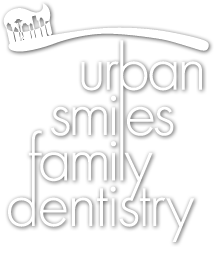Dental Crowns & Bridges
DURABLE, WELL-FITTING & NATURAL-LOOKING CROWNS

We will provide you with a crown that is well-fitted and long-lasting. This includes getting the crown that is right for you, and making sure it aligns with your natural bite. Various types of crowns can be used, including all-metal and all-porcelain crowns.
ALL-PORCELAIN CROWNS
Traditional porcelain crowns are made with porcelain covering a precious metal shell. The noble metal provides strength and support for the porcelain which gives it a natural appearance. All-porcelain, also called “all-ceramic” crowns, use a ceramic shell instead of a metal shell to support the porcelain.
With advances in technology, these all-porcelain crowns can be used in a variety of situations. Dr. Mironov will complete a thorough examination and listen to your wishes to determine which type of crown is best suited for you.
WHEN WOULD I NEED A CROWN?
A crown, or cap, is a custom-made dental restoration which protects the underlying tooth. You may need a crown because of:
- Extensive tooth decay
- Large metal or tooth-colored fillings, that weaken the remaining tooth
- Broken or cracked teeth
- A tooth that has had root canal therapy
- A misaligned or misshaped tooth
- Teeth that have large fillings that are breaking down and cannot be refilled
Dental Bridges
Do you have missing or broken teeth? A dental bridge is a device used to fill the space where a tooth has fallen out or been removed. We can help you determine quickly if a dental bridge is the best option for restoring your smile.
WHY A BRIDGE?
Spaces left by missing teeth affect the rest of your teeth. These gaps can cause chewing problems. If even one tooth is missing, other teeth may slowly shift out of place. This changes the way your teeth fit together. A poor bite may make your jaw sore. Your teeth may become harder to clean, leading to tooth decay and gum disease. And shifting teeth may change your smile.

A typical Bridge consists of a pontic (a filler tooth) that is attached to two surrounding abutments (crowns). Once complete, this bridge structure is bonded into the mouth. Spaces in the mouth from missing teeth can cause multiple teeth to shift, lead to occlusion (biting) and/or jaw problems and spur periodontal disease. Dental bridges safeguard the integrity of existing teeth and help maintain a healthy, vibrant smile.
ALL-PORCELAIN BRIDGES
Traditional porcelain bridges are made with porcelain covering a precious metal shell. The noble metal provides strength and support for the porcelain which gives it a natural appearance. All-porcelain, also called “all-ceramic” bridges, use a ceramic shell instead of a precious metal shell to support the porcelain.
With advances in technology, these all-porcelain bridges can be used in a variety of situations to bring out the beauty of your smile.
ADVANTAGES OF BRIDGES
- Treatment can be completed relatively quickly.
- Bridges can appear very natural.
- Dental insurance will cover some of the procedure, where it may not cover other procedures.
DISADVANTAGES OF BRIDGES
- Two healthy teeth have to be cut down to replace the missing tooth in between.
- A bridge does not last as long as a dental implant.
- A bridge does not preserve the bone in the area of the missing teeth.
related questions & answers:
Tooth Replacement Decision Tree
list of related conditions
• ceramic crowns • crown dentistry • dental bridge • gold crowns • loose crown • porcelain crown • porcelain tooth veneers • temporary crowns
